 "ttyymmnn" (ttyymmnn)
"ttyymmnn" (ttyymmnn)
10/07/2016 at 13:55 • Filed to: Planelopnik, planelopnik history
 8
8
 8
8
 "ttyymmnn" (ttyymmnn)
"ttyymmnn" (ttyymmnn)
10/07/2016 at 13:55 • Filed to: Planelopnik, planelopnik history |  8 8
|  8 8 |
Welcome to
This Date in Aviation History
, getting of you caught up on milestones, important historical events and people in aviation from October 5 through October 7.
!!! UNKNOWN CONTENT TYPE !!!
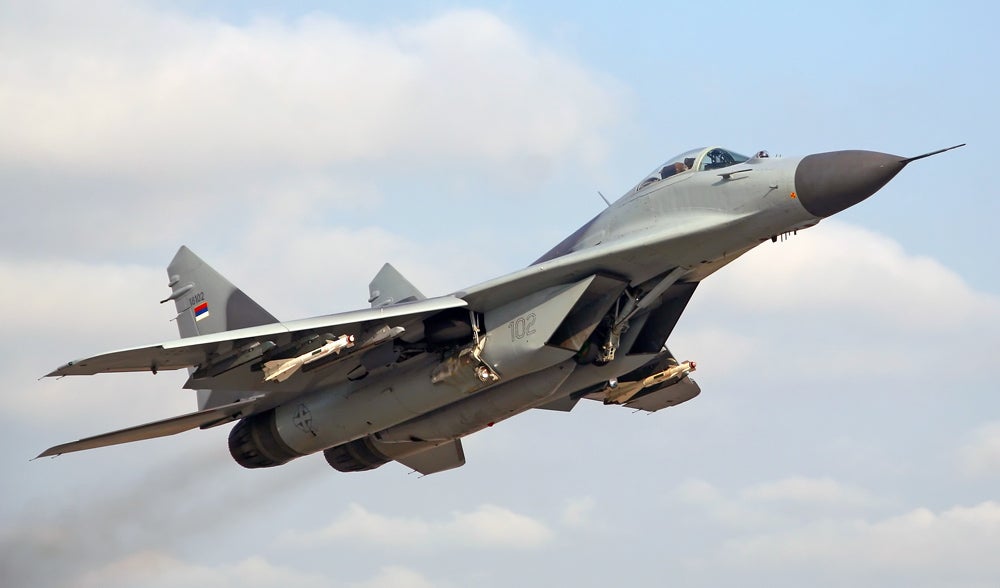
October 6, 1977 – The first flight of the Mikoyan Gurevich MiG-29. During the Vietnam War, the US Air Force discovered that using high speed fighter aircraft in the ground attack role left them vulnerable to attack from above. Air superiority became the watchword, as the US sought to regain control of the airspace over the battlefield in the way they had late in WWII and again during the Korean War. By the late 1960s, the Air Force began its F-X program to develop a new air superiority fighter which brought about the !!!error: Indecipherable SUB-paragraph formatting!!! . But the Soviet Union found themselves in a similar situation, and had to respond to the threat posed by this new high-performance American fighter. In 1969, they began their own program to produce a new frontline air superiority fighter to counter the Eagle. Dubbed Perspektivnyy Frontovoy Istrebitel ( PFI , or Advanced Frontline Fighter ), the program called for an agile, long-range fighter with Mach 2+ speed and the ability to operate from rough or unimproved airstrips. As development progressed, the Russians found themselves in a similar situation as the Americans, needing both a heavy air superiority fighter and a lighter multi-role fighter. The MiG-29 became roughly analogous to the !!!error: Indecipherable SUB-paragraph formatting!!! , while the larger and heavier !!!error: Indecipherable SUB-paragraph formatting!!! took on the role of the heavy fighter. The MiG-29 is powered by a pair of !!!error: Indecipherable SUB-paragraph formatting!!! afterburning turbofans spaced far enough apart that the area between them produces additional lift, and intake flaps are fitted that prevent the ingestion of foreign object debris during landing and takeoff from rough airstrips. It is armed with a single 30mm cannon in the wing root, and is also fitted with a laser rangefinder and !!!error: Indecipherable SUB-paragraph formatting!!! (IRST) system housed in an eyeball-like bubble forward of the cockpit. This system allows the pilot to track targets that emit infrared radiation while not giving off any energy of their own, making it difficult for the target aircraft to know they are being tracked. Numerous missiles, rockets, and bombs can also be fitted to its six underwing hard points. The MiG-29 entered service with the Soviet frontline forces in 1982, and was given the NATO designation Fulcrum. By the mid-1980s, the MiG-29 was appearing at international air shows, but the capabilities of the Fulcrum remained a mystery to the West until analysts and pilots were able to fly a number of them following the reunification of Germany in 1990. In 1997, the US bought Moldova’s stock of 21 MiG-29s to prevent their sale to Iran or other rogue states, but it also afforded them the chance to train against the Fulcrum. They found the Fulcrum to be a capable dogfighter, notable for its helmet-mounted sight that could target an air-to-air missile while the aircraft’s nose was pointed in another direction. But it also had a relatively short range and a somewhat primitive cockpit that limited the pilot’s situational awareness of the battle space. Like most Russian warplanes, the Fulcrum has been continuously updated throughout its service life and exists in a myriad of variants, including two-seat training variants, and now includes the substantially modernized !!!error: Indecipherable SUB-paragraph formatting!!! which remains in production. Over 1,600 aircraft have been produced, and they can be found flying currently in the air forces of 26 nations. (Photo by Krasimir Grozev via !!!error: Indecipherable SUB-paragraph formatting!!! )
!!! UNKNOWN CONTENT TYPE !!!
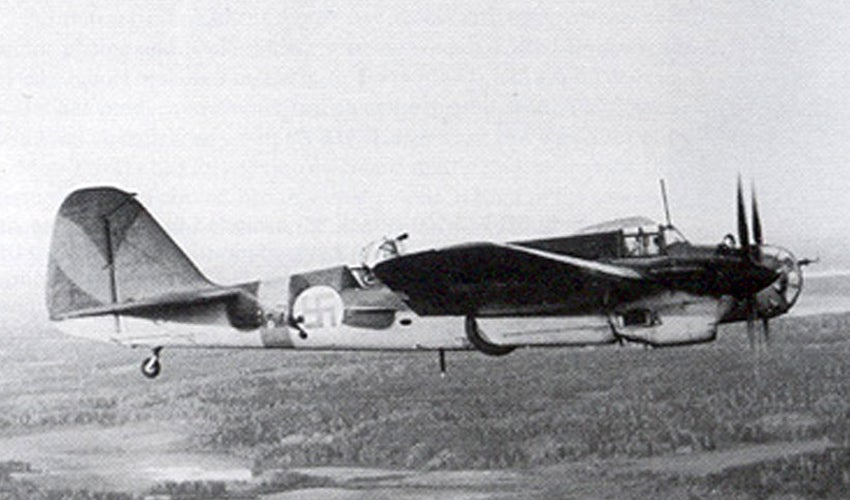
October 7, 1934 – The first flight of the Tupolev SB. Before the start of WWII, design of bomber aircraft began to separate into two general trends. The first was large, heavy bombers capable of long range and heavy bomb loads. These bombers could pack a punch, but they weren’t particularly fast. The second trend was to produce medium-sized, two-engine bombers that didn’t carry as many bombs but used high speed for protection from enemy fighters. In 1933, the Soviet Air Force ministry issued a requirement for a new high speed bomber designated Skorostnoi Bombardirovschik (SB) and work on the new aircraft began at the Tupolev design bureau at the Central Aerodynamic Institute ( !!!error: Indecipherable SUB-paragraph formatting!!! ). By the early 1930s, aircraft designers had moved away from fabric-covered wooden frameworks to !!!error: Indecipherable SUB-paragraph formatting!!! aircraft, an arrangement where the metal skin of the aircraft plays a part in keeping the aircraft rigid. The prototype bomber, known as the ANT-40, was the first modern stressed skin aircraft produced by the Russians in large numbers. Tupolev initially created two versions, the first powered by two !!!error: Indecipherable SUB-paragraph formatting!!! engines (known as the ANT-40RT, which flew first) and the second powered by two Spanish-made !!!error: Indecipherable SUB-paragraph formatting!!! liquid cooled V-12 engines (known as the ANT-40IS). It had a crew of three and a top speed of 280 mph, was armed with 4 defensive machine guns, and could carry up to 2,200 pounds of bombs. The second version, with the inline engines, would serve as the production prototype, but not before some significant bugs were worked out. The first SBs started rolling off the production line before the testing program had even completed, and the assembly lines faced difficulties because of constant modifications to the production process. Many pilots and maintenance personnel were upset with the early shortcomings of the SB and, when the Russian Commissar for Heavy Industry, Sergo Ordzhonikidze, came for an inspection, the crews covered their aircraft with placards complaining about the problems. !!!error: Indecipherable SUB-paragraph formatting!!! was summoned for an audience with Soviet leader !!!error: Indecipherable SUB-paragraph formatting!!! , where he told the Russian leader that most of the defects were trivial. Stalin replied, “There are no trivialities in aviation; everything is serious and any uncorrected triviality could lead to the loss of an aircraft and its crew.” Production of the SB continued, and corrections and improvements made their way into the fleet, and the SB first saw action with the Spanish Republicans during the !!!error: Indecipherable SUB-paragraph formatting!!! in 1936. There, the SB proved to be faster than contemporary fighters, and significantly faster than the older biplane fighters it faced. The SB also saw service in China, Mongolia, Finland, and some captured aircraft were flown by the Germans. Despite its speed, the rapid pace of fighter development rendered the SB obsolete by 1941, and the remaining aircraft were used as transports and cargo aircraft. In all, 6,656 SBs were produced between 1936 and 1941, making it one of the most numerous aircraft of its day. (Photo: Tupolev SB in Finnish markings, author unknown)
!!! UNKNOWN CONTENT TYPE !!!
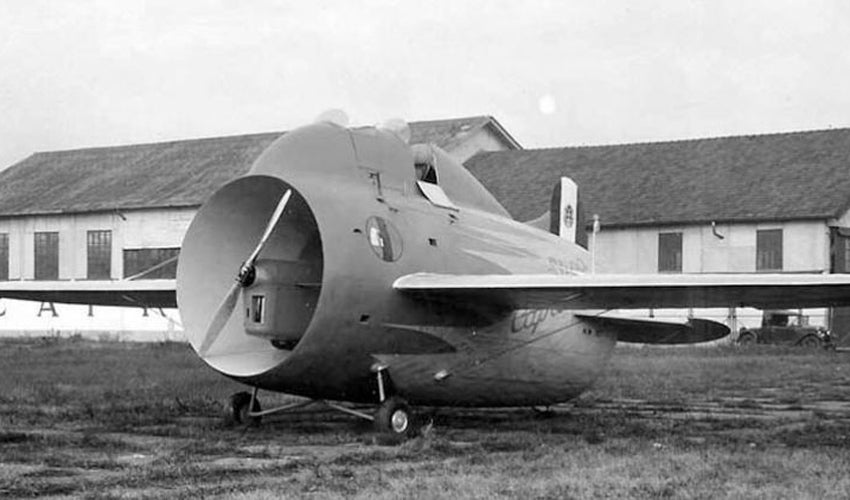
October 7, 1932 – The first flight of the Stipa-Caproni. The decades of the 1920s-1930s are referred to as the !!!error: Indecipherable SUB-paragraph formatting!!! , a time when aviation became fixed in the public imagination, and the speed of technological advance became quite rapid. But it was also a time of great experimentation, when aircraft developers tested new methods of design and construction that were often quite outlandish. But, as is often the case, the craziest ideas can show some ingenuity and innovative thinking, and would eventually come to influence future designs. One of the more exotic ideas to come out of this period was the Stipa-Caproni, also known by the reverse name Caproni Stipa. Unlike traditional aircraft of the day, where the wings were attached to a spar running through the fuselage, the Stipa-Caproni featured a large, open, barrel-shaped fuselage with the engine and propeller inside. Created by Italian engineer !!!error: Indecipherable SUB-paragraph formatting!!! and built by manufacturer !!!error: Indecipherable SUB-paragraph formatting!!! , the barrel-like fuselage was a tapered, airfoil shape and created a !!!error: Indecipherable SUB-paragraph formatting!!! that compressed the air moved by the propeller and sped it up, putting into practice principles of fluid dynamics described by !!!error: Indecipherable SUB-paragraph formatting!!! in 1738. Stipa called his invention an intubed propeller , and he rigorously calculated the shape of both the tube and the propeller, as well as the speed of the propeller, for optimal efficiency.
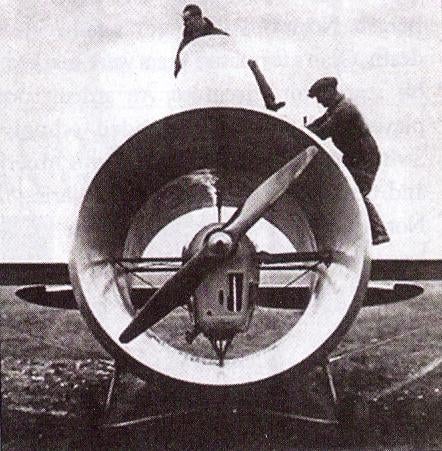
In 1932, he convinced the Italian government to fund the construction of his unorthodox airplane. Built mostly of wood, the aircraft’s elliptical wing passed through the oversized fuselage behind the propeller, and the rudder and elevators were mounted directly behind the tubular fuselage to benefit from the passage of air through the fuselage. Two pilots sat in tandem atop the aircraft. Test pilots found that the aircraft was extremely stable, almost to the point of being difficult to turn, and the fact that the entire aircraft helped create lift meant that extremely slow landing speeds were possible. Despite the promising test results, the Stipa-Caproni didn’t perform better than contemporary aircraft, and the project was canceled. However, Stipa’s work was influential and widely studied, and some consider his intubed propeller, essentially a
!!!error: Indecipherable SUB-paragraph formatting!!!
, as the precursor to the modern turbofan engine.
(Photo authors unknown)
!!! UNKNOWN CONTENT TYPE !!!
Short Takeoff
!!! UNKNOWN CONTENT TYPE !!!
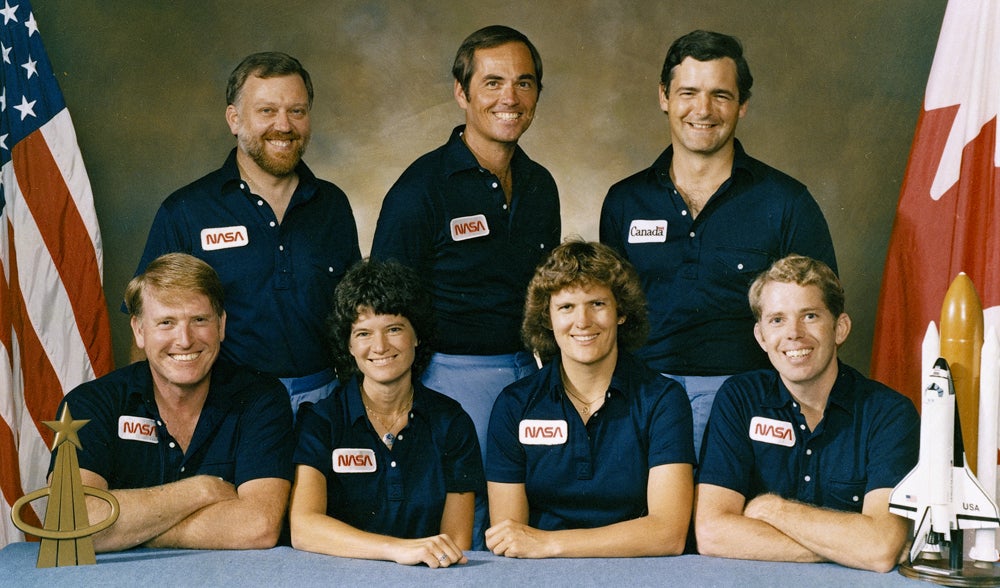
October 5, 1984 – The launch of Space Shuttle Challenger on STS-41-G. The !!!error: Indecipherable SUB-paragraph formatting!!! tallied many firsts during its 34 years of spaceflights, not the least of which was the first launch and return of a reusable spacecraft and the first American woman in space. But the flight of Challenger on October 5, 1991 had an impressive list of firsts, some important, some rather mundane. But firsts nonetheless. STS-41-G was launched to deliver the !!!error: Indecipherable SUB-paragraph formatting!!! , but Challenger also carried the largest crew of any mission with 7 astronauts. It was the first time that two women went to space ( !!!error: Indecipherable SUB-paragraph formatting!!! and !!!error: Indecipherable SUB-paragraph formatting!!! ), and Sullivan was the first woman to perform a space walk ( !!!error: Indecipherable SUB-paragraph formatting!!! ). Among the crew were the first Australian-born astronaut ( !!!error: Indecipherable SUB-paragraph formatting!!! ), and the first Canadian astronaut ( !!!error: Indecipherable SUB-paragraph formatting!!! ). And, topping it off, astronaut Scully-Power was the first astronaut with a beard. (NASA photo)
!!! UNKNOWN CONTENT TYPE !!!
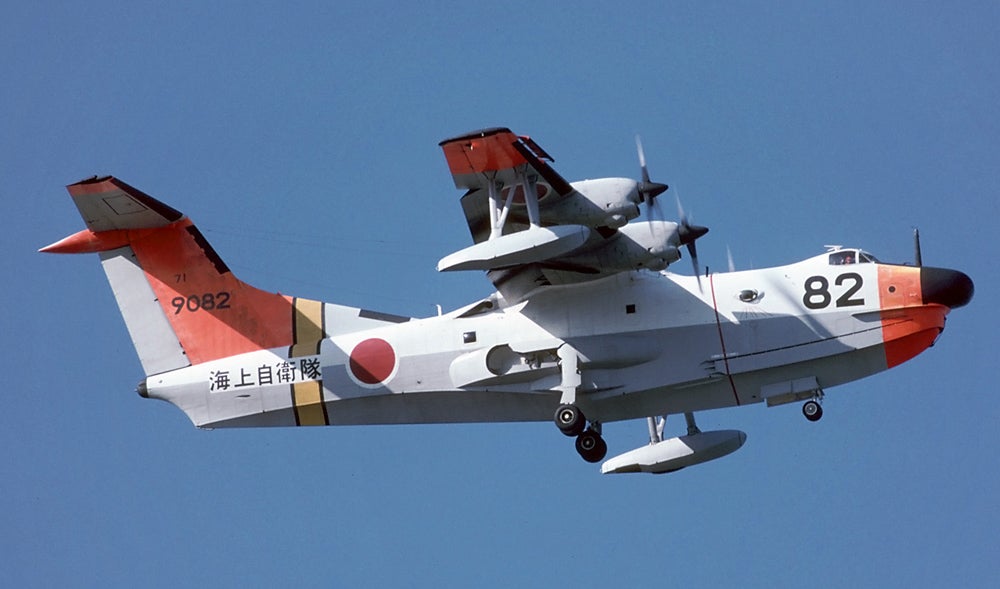
October 5, 1967 – The first flight of the Shin Meiwa US-1A, a large, amphibious !!!error: Indecipherable SUB-paragraph formatting!!! (STOL) aircraft developed from the Shin Meiwa PS-1 and used by the Japan Maritime Self-Defense Force for maritime patrol, anti-submarine warfare (ASW) and search and rescue (SAR). The hull of the US-1A is based on a refinement of the the !!!error: Indecipherable SUB-paragraph formatting!!! hull design, and a special boundary layer control system helps to reduce the takeoff distance. In 23 years of service, the US-1A and her crews have reportedly saved 550 lives. (Photo by Rob Schleiffert via !!!error: Indecipherable SUB-paragraph formatting!!! )
!!! UNKNOWN CONTENT TYPE !!!
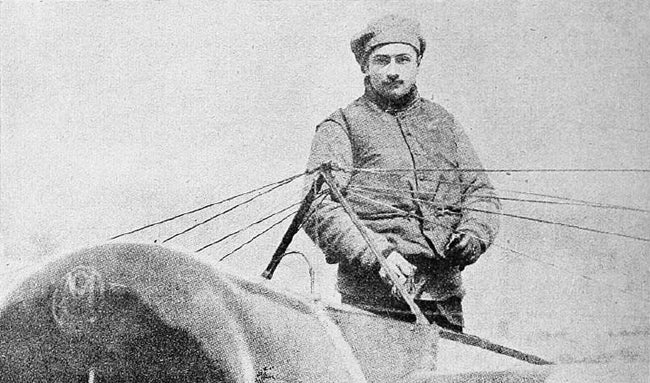
October 5, 1918 – The death of Roland Garros. Eugčne Adrien Roland Georges Garros was a French aviation pioneer who competed in air races and set a world altitude record of 18,410 ft in 1911. During WWI, Garros helped develop a system of bullet deflectors that allowed gunnery through the propeller and, on August 3, 1914, Garros shot down a German !!!error: Indecipherable SUB-paragraph formatting!!! , receiving credit for the first aerial victory in history. Garros was shot down and killed just one day short of his 30th birthday, and five weeks before the !!!error: Indecipherable SUB-paragraph formatting!!! that ended WWI. Despite his lasting fame, though, Garros was not officially an ace, having downed only 4 aircraft during the war. (Photo author unknown)
!!! UNKNOWN CONTENT TYPE !!!
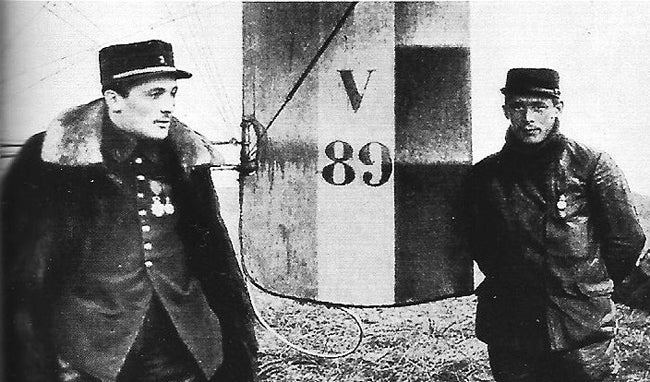
October 5, 1914 – The first air-to-air combat victory is recorded when a !!!error: Indecipherable SUB-paragraph formatting!!! pusher biplane of Escadrille VB24, piloted by Sgt. Joseph Frantz with observer Cpl. Louis Quénault, shot down a German !!!error: Indecipherable SUB-paragraph formatting!!! over Reims, France. Frantz fired nearly 100 rounds from his !!!error: Indecipherable SUB-paragraph formatting!!! machine gun, while the German observer returned fire with his rifle. After running out of ammunition, the French observer continued firing with his rifle, and the German plane crashed, killing both crewmen. (Photo author unknown)
!!! UNKNOWN CONTENT TYPE !!!
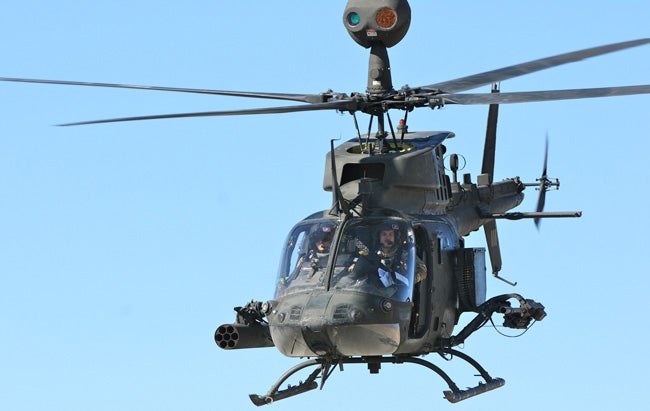
October 6, 1983 – The first flight of the Bell OH-58D Kiowa Warrior. The OH-58D Kiowa, a development of the !!!error: Indecipherable SUB-paragraph formatting!!! , entered service in 1969 in response to an Army requirement for a !!!error: Indecipherable SUB-paragraph formatting!!! (LOH). The OH-58D variant was a product of the Advanced Helicopter Improvement Program (AHIP) which included improved radar for nap-of-the-earth flight, a quieter four-bladed rotor, and a mast-mounted sight (MMS) for sighting targets from behind the cover of terrain. The OH-58D is fitted with pylons that can fire two !!!error: Indecipherable SUB-paragraph formatting!!! missiles, seven rockets, two air-to-air !!!error: Indecipherable SUB-paragraph formatting!!! missiles or one fixed .50 caliber machine gun. (US Army photo)
!!! UNKNOWN CONTENT TYPE !!!
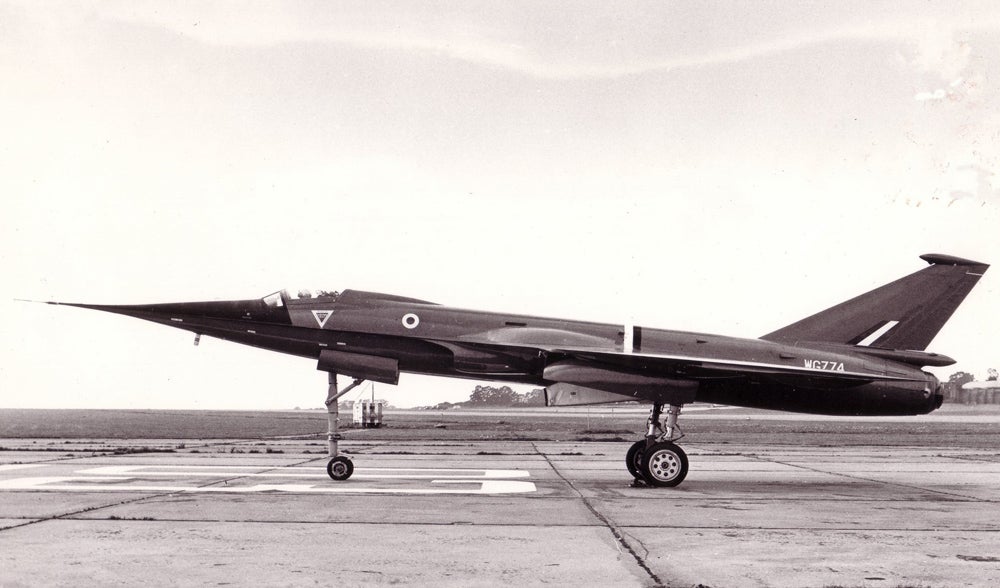
October 6, 1954 – The first flight of the Fairey Delta 2,
a British research aircraft that was built to explore the regimes of transonic and supersonic flight. The FD.2 was powered by a single
!!!error: Indecipherable SUB-paragraph formatting!!!
axial flow jet engine and was the first aircraft to exceed 1,000 mph, holding the world speed record for more than a year before being surpassed by the
!!!error: Indecipherable SUB-paragraph formatting!!!
. The ogee delta wing shape developed for the FD.2 was later used on the
!!!error: Indecipherable SUB-paragraph formatting!!!
, as was the characteristic droop nose. The Delta 2 was also the first British aircraft to have all of its flight surfaces hydraulically controlled.
(Photo author unknown)
!!! UNKNOWN CONTENT TYPE !!!
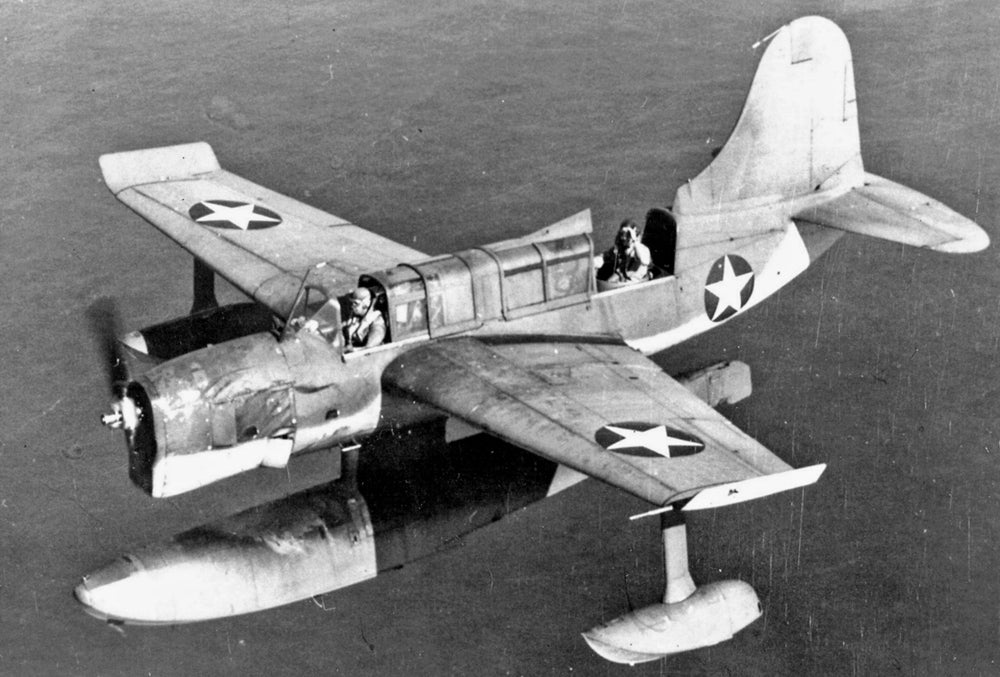
October 6, 1939 – The first flight of the Curtiss SO3C Seamew, a monoplane seaplane designed for the US Navy to replace the !!!error: Indecipherable SUB-paragraph formatting!!! . Per the US Navy requirement, the Seamew could be equipped with either a float or landing gear. To address stability problems, the wingtips were curved upward, and the vertical stabilizer extended across the observer’s cockpit. Due to unresolved problems with the !!!error: Indecipherable SUB-paragraph formatting!!! inline V-12 engine, the Seamew was withdrawn from frontline units in 1944 in favor of the older biplanes it was meant to replace. Nearly 800 were built, and it was retired in 1945. (US Navy photo)
!!! UNKNOWN CONTENT TYPE !!!
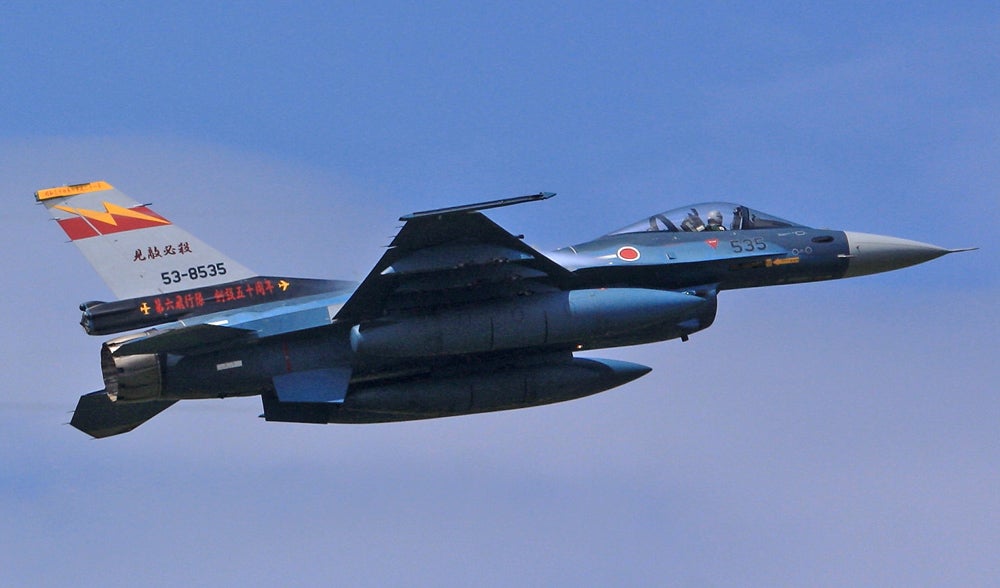
October 7, 1995 – The first flight of the Mitsubishi F-2, a fighter built in cooperation between !!!error: Indecipherable SUB-paragraph formatting!!! and !!!error: Indecipherable SUB-paragraph formatting!!! . Based on the F-16A, the F-2 features a larger wing made of composite materials, larger tail plane, larger nose for more a powerful radar, larger air intake and a three-piece canopy. As part of the partnership, advances made in the F-2 were transferred back to Lockheed Martin for use in future US fighters. Produced from 1995-2011, ninety-four aircraft have been built and serve with the Japan Air Self-Defense Force. (Photo by Cp9asngf via !!!error: Indecipherable SUB-paragraph formatting!!! )
!!! UNKNOWN CONTENT TYPE !!!
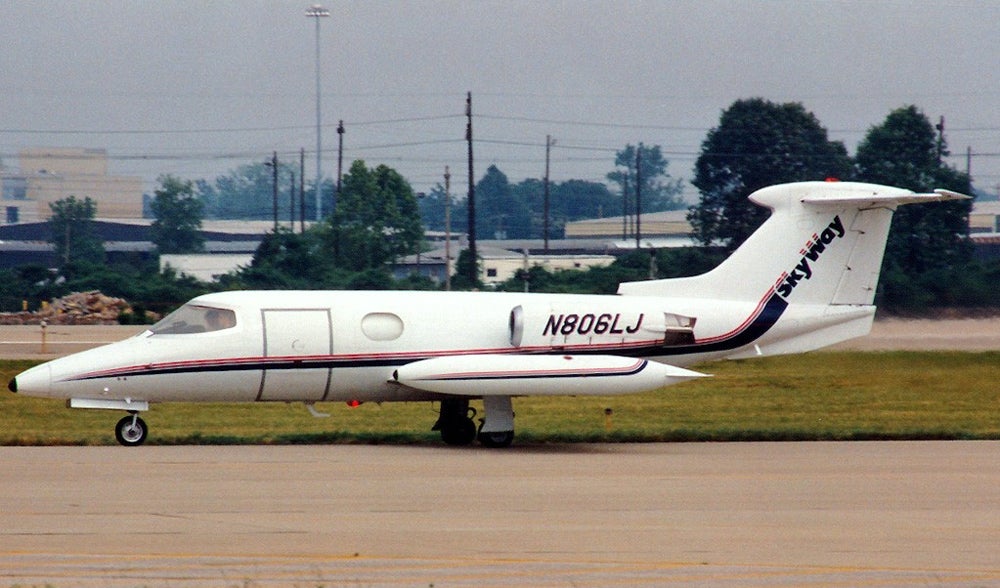
October 7, 1963 – The first flight of the Learjet 23, the world’s first light business jet. A true pioneer in the world of business jet aviation, the LearJet 23 originated in Switzerland where it was conceived by !!!error: Indecipherable SUB-paragraph formatting!!! and designed by Hans-Luzius Studer, who had worked previously on the !!!error: Indecipherable SUB-paragraph formatting!!! fighter for Switzerland. The six-passenger bizjet became an instant success, and production was moved to the US where 105 aircraft were produced from 1962-1966. The LearJet has been continuously upgraded and enlarged since, and newer variants remain in production. (Photo by JetPix via !!!error: Indecipherable SUB-paragraph formatting!!! )
!!! UNKNOWN CONTENT TYPE !!!
Recent Aviation History Posts
!!! UNKNOWN CONTENT TYPE !!!
!!! UNKNOWN CONTENT TYPE !!!
!!! UNKNOWN CONTENT TYPE !!!
!!! UNKNOWN CONTENT TYPE !!!
!!! UNKNOWN CONTENT TYPE !!!
If you enjoy these Aviation History posts, please let me know in the comments. And if you missed any of the past articles, you can find them all at !!!error: Indecipherable SUB-paragraph formatting!!! .
!!! UNKNOWN CONTENT TYPE !!!
 MonkeePuzzle
> ttyymmnn
MonkeePuzzle
> ttyymmnn
10/07/2016 at 14:15 |
|
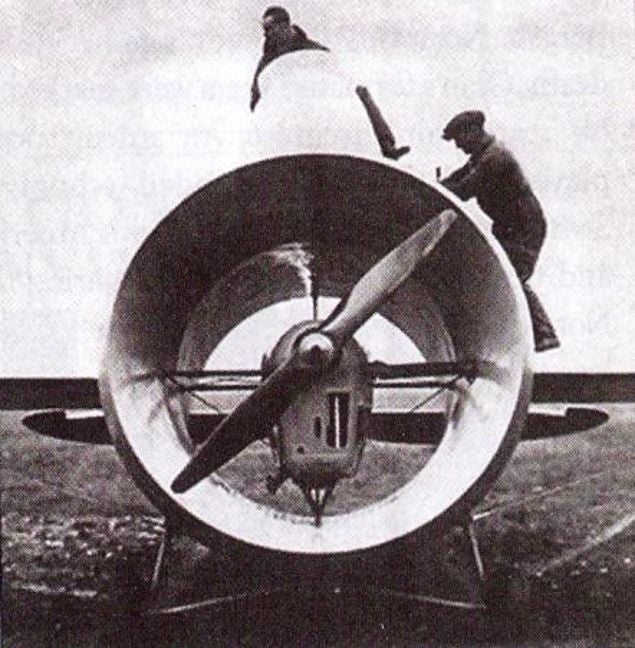
I’ve always thought this is genius. I mean it’s basically just a thousand blades short of being a jet engine. enclosing and directing the air makes perfect sense.
 Viggen
> ttyymmnn
Viggen
> ttyymmnn
10/07/2016 at 14:16 |
|
Awww no mention of how smokey the RD-33s are? I like to refer to the MiG-29 as one of the best looking, but least successful modern fighters, due to its combat record being rather poor.
D’aaaaaaaaaaawwwww Kiowa Warrior. I miss seeing and hearing the -58s on the flight line.
Saw the Fairey Delta 2 in 2006, when I visited Great Britain and by chance went to the RAF Museum at RAF Cosford.
Really don’t know how I’d feel about a portion of the vertical stabilizer being attached to the sliding canopy, on that Seamew.
 facw
> ttyymmnn
facw
> ttyymmnn
10/07/2016 at 14:23 |
|
Umm, you may want to check the date on that Challenger flight...
It seems extremely unlikely to have happened in 1991.
 ttyymmnn
> Viggen
ttyymmnn
> Viggen
10/07/2016 at 14:25 |
|
A mention of the smokey engines might be warranted. It was one of the knocks against the Phantom, too. You could see the smoke for miles.
I wondered just how effective that dorsal ridge would be with the rear canopy open. It looks like the Seamew was a mess from the start, and no matter what they did would make it a good plane.
 ttyymmnn
> facw
ttyymmnn
> facw
10/07/2016 at 14:28 |
|
Extremely. It should read 1984. Those responsible for the error have been sacked.
Thanks for pointing that out. There are lots of words on these pages, and something inevitably gets missed.
 ttyymmnn
> MonkeePuzzle
ttyymmnn
> MonkeePuzzle
10/07/2016 at 14:35 |
|
You’re exactly right. Interestingly, Caproni saw this plane as a proof of concept, not a finished design. He imagined using multiple intubed propellers mounted on the wings of a large aircraft. This plane was also largely influential in the design of the N.1, which some claim was the first jet plane, though it used a gas engine to spin the turbine in an arrangement more correctly called a motorjet.
https://en.m.wikipedia.org/wiki/Caproni_Campini_N.1
 Highlander-Datsuns are Forever
> ttyymmnn
Highlander-Datsuns are Forever
> ttyymmnn
10/07/2016 at 14:38 |
|
Nice F-15 Eagle, errrr... I mean Mig 29.
 ttyymmnn
> Highlander-Datsuns are Forever
ttyymmnn
> Highlander-Datsuns are Forever
10/07/2016 at 14:53 |
|
The Russians never met an American plane they couldn’t copy.